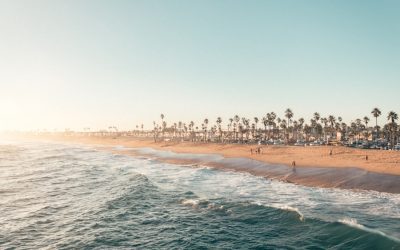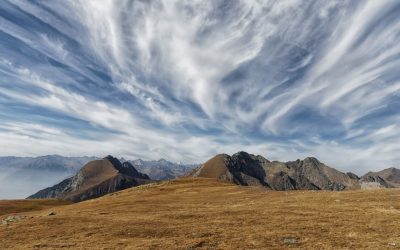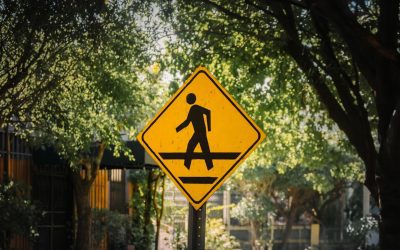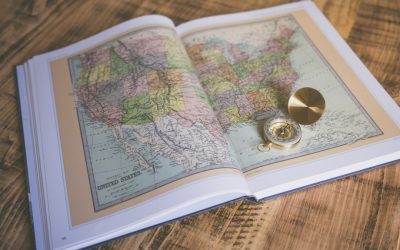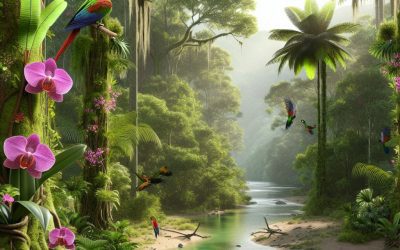World Geography
Geography is the study of the Earth’s landscapes, environments, and the relationships between people and their surroundings. It encompasses both the physical aspects of the Earth, such as its landforms, bodies of water, and climate, as well as the human aspects, including population distribution, cultures, and economies. World geography is a broad field that seeks to understand the complexities of our planet and how humans interact with it. By studying world geography, we can gain a deeper appreciation for the diversity of our planet and the interconnectedness of its various regions.
Geography is a multidisciplinary field that draws on elements of physical science, social science, and humanities. It involves the use of maps, spatial analysis, and geographic information systems (GIS) to understand the Earth’s surface and the processes that shape it. World geography also encompasses the study of human geography, which examines the ways in which people and their activities are distributed across the Earth. By understanding world geography, we can better appreciate the environmental, cultural, and economic challenges facing different regions of the world. This knowledge is crucial for addressing global issues such as climate change, resource management, and international development.
The Five Oceans and Seven Continents
The Earth’s surface is divided into five major oceans: the Pacific, Atlantic, Indian, Southern (or Antarctic), and Arctic Oceans. These vast bodies of water play a crucial role in regulating the Earth’s climate and supporting diverse marine ecosystems. The oceans also serve as important transportation routes and a source of food and other natural resources for human societies around the world.
In addition to the oceans, the Earth’s landmasses are divided into seven continents: Africa, Antarctica, Asia, Europe, North America, Australia (or Oceania), and South America. Each continent has its own unique physical and cultural characteristics, shaped by millions of years of geological processes and human history. From the deserts of Africa to the rainforests of South America, the continents offer a rich tapestry of landscapes and environments for exploration and study.
Major Mountain Ranges and Deserts
The Earth’s surface is also marked by major mountain ranges and deserts that have shaped the planet’s physical and cultural landscapes. The Himalayas, for example, are the highest mountain range in the world and are home to diverse ecosystems and cultures in countries such as India, Nepal, and Bhutan. The Andes in South America, the Rockies in North America, and the Alps in Europe are other prominent mountain ranges that have influenced human settlement patterns and economic activities.
Deserts cover about one-third of the Earth’s land surface and are characterized by low precipitation and extreme temperatures. The Sahara Desert in Africa is the largest hot desert in the world, while the Gobi Desert in Asia is one of the largest cold deserts. Deserts are not only home to unique flora and fauna but have also been important trade routes and cultural crossroads throughout history.
Climate Zones and Biomes
The Earth’s climate is influenced by a variety of factors, including latitude, altitude, ocean currents, and prevailing winds. As a result, the planet is divided into different climate zones, each with its own characteristic weather patterns and ecosystems. The equator, for example, experiences a tropical climate with high temperatures and heavy rainfall, while the polar regions have a cold and dry climate.
These climate zones give rise to different biomes, or large ecological areas characterized by distinct plant and animal communities. The tropical rainforest biome, found near the equator, is home to a diverse array of species and is vital for regulating the Earth’s climate. The grasslands biome, found in regions such as the African savannah and North American prairies, supports grazing animals and has been important for human agriculture throughout history.
Human Geography and Population Distribution
Human geography examines the ways in which people and their activities are distributed across the Earth’s surface. It encompasses topics such as population growth, migration patterns, urbanization, and cultural diversity. Understanding human geography is crucial for addressing global challenges such as poverty, inequality, and environmental degradation.
Population distribution is uneven across the world, with some regions experiencing rapid population growth while others are declining. The majority of the world’s population lives in Asia, particularly in countries such as China and India. Urban areas are also growing rapidly, with more than half of the world’s population now living in cities. This trend has significant implications for infrastructure development, resource management, and social inequality.
Historical and Cultural Geography
Historical geography examines how human activities have shaped the Earth’s landscapes over time. It explores topics such as colonialism, trade routes, and the rise and fall of empires. Cultural geography focuses on how human cultures have developed in different regions of the world and how they interact with their environments.
The Silk Road, for example, was an ancient trade route that connected China with Europe and facilitated the exchange of goods, ideas, and technologies across Eurasia. This historical trade route had a profound impact on the development of cultures and economies along its path. Similarly, cultural geographers study how different societies have adapted to their environments through practices such as agriculture, architecture, and religious beliefs.
The Importance of Geographic Knowledge
Geographic knowledge is crucial for addressing global challenges such as climate change, resource management, and international development. By understanding world geography, we can better appreciate the environmental, cultural, and economic challenges facing different regions of the world. This knowledge is crucial for addressing global issues such as climate change, resource management, and international development.
Geographic knowledge also helps us to understand our interconnectedness with other regions of the world. By studying world geography, we can gain a deeper appreciation for the diversity of our planet and the interconnectedness of its various regions. This understanding can foster a sense of global citizenship and empathy for people from different cultures and backgrounds.
In conclusion, world geography is a complex and multifaceted field that encompasses both physical and human aspects of the Earth’s landscapes. By studying world geography, we can gain a deeper appreciation for the diversity of our planet and the interconnectedness of its various regions. This knowledge is crucial for addressing global challenges such as climate change, resource management, and international development. It also helps us to understand our interconnectedness with other regions of the world and fosters a sense of global citizenship.
FAQs
What is world geography?
World geography is the study of the Earth’s landscapes, environments, and the relationships between people and their environments. It encompasses the physical features of the Earth, as well as the human activity that takes place on it.
Why is world geography important?
World geography is important because it helps us understand the world around us. It provides insights into the physical and human processes that shape our planet, and helps us make informed decisions about how to interact with our environment.
What are the main branches of world geography?
The main branches of world geography include physical geography, which focuses on the Earth’s natural features and processes, and human geography, which examines the relationships between people and their environments.
How does world geography impact our daily lives?
World geography impacts our daily lives in numerous ways, from influencing the weather and climate we experience, to shaping the availability of natural resources and influencing the distribution of populations and cultures around the world.
What are some key concepts in world geography?
Key concepts in world geography include location, place, human-environment interaction, movement, and region. These concepts help geographers understand and interpret the world around them.
Natural Resources of Taiwan: Where Natural Resources are Located in Taiwan
Taiwan, an island nation located off the southeastern coast of China, is renowned for its rich and diverse natural resources. The geographical positioning of Taiwan, coupled with its unique climatic conditions, has endowed the island with a variety of resources that are crucial for its economy and sustainability. From mineral deposits to fertile agricultural land, Taiwan’s natural resources play a pivotal role in supporting its population and driving economic growth. The interplay between these resources and the island’s development has shaped its history and continues to influence its future. The significance of Taiwan’s natural resources extends beyond mere economic value; they are integral to the cultural identity and lifestyle of its inhabitants. The lush landscapes, mountainous terrains, and coastal regions not only provide essential materials but also contribute to the island’s biodiversity. This intricate relationship between the environment and human activity underscores the importance of understanding and managing these resources effectively. As Taiwan faces challenges such as urbanisation, industrialisation, and climate change, the sustainable management of its natural resources has become increasingly critical. Summary Taiwan is rich in natural resources, including minerals, agricultural land, forestry, water, and energy sources. The geological and topographical features of Taiwan contribute to its diverse range of natural resources. Taiwan has significant mineral resources, including coal, gold, and limestone, which contribute to its economy. The agricultural resources in Taiwan are diverse, with a focus on rice, fruits, and vegetables, making it a key player in the global food market. Taiwan’s forestry and timber resources are carefully managed to ensure sustainable use and conservation of the environment. Geological and Topographical Features of Taiwan Geological Structure...
Cultural or Historical Sites of Taiwan: Important Cultural Landmarks or Historical Sites In Taiwan
Taiwan, an island nation nestled in East Asia, boasts a rich tapestry of cultural and historical sites that reflect its diverse heritage and complex history. The island’s strategic location has made it a crossroads of various civilisations, resulting in a unique blend of indigenous, Chinese, Japanese, and Western influences. This confluence is vividly illustrated in its architecture, traditions, and festivals, making Taiwan a fascinating destination for those interested in exploring its past and present. From ancient temples to colonial forts, each site tells a story that contributes to the broader narrative of Taiwan’s identity. The significance of these cultural and historical sites extends beyond mere tourism; they serve as vital links to Taiwan’s past, offering insights into the lives of its people throughout the centuries. The preservation of these sites is crucial for understanding the island’s evolution, particularly in the context of its political history and social changes. As visitors traverse the landscapes dotted with temples, museums, and parks, they encounter not only the physical remnants of history but also the enduring spirit of a society that has navigated through various challenges while maintaining its unique cultural identity. Summary Taiwan is home to a rich tapestry of cultural and historical sites, each with its own unique story to tell. The National Palace Museum is a treasure trove of Chinese art and artifacts, showcasing over 700,000 pieces of ancient imperial collections. The Chiang Kai-shek Memorial Hall is a grand monument dedicated to the former President of the Republic of China, offering a glimpse into Taiwan’s modern history. Longshan Temple is a bustling and vibrant place of worship, known for its...
Population Density of Taiwan
Taiwan, an island nation located in East Asia, is renowned for its vibrant culture, advanced technology, and stunning landscapes. However, one of the most striking characteristics of Taiwan is its population density. With a land area of approximately 36,000 square kilometres and a population exceeding 23 million, Taiwan boasts one of the highest population densities in the world. This phenomenon has profound implications for various aspects of life on the island, from urban planning and infrastructure to social dynamics and environmental sustainability. Understanding the intricacies of Taiwan’s population density is essential for grasping the challenges and opportunities that arise in such a densely populated region. The high population density in Taiwan is not merely a statistic; it reflects a complex interplay of historical, geographical, and socio-economic factors. The island’s mountainous terrain limits the availability of habitable land, concentrating the population in urban areas. Cities like Taipei, Kaohsiung, and Taichung have become bustling metropolises, drawing people from rural areas in search of better employment opportunities and living standards. This migration has further exacerbated the density issue, leading to a myriad of challenges that require careful consideration and strategic planning. Summary Taiwan has one of the highest population densities in the world, with over 23 million people living in an area of approximately 36,000 square kilometers. Factors contributing to Taiwan’s high population density include limited land availability, urbanization, and high birth rates. Compared to other countries, Taiwan’s population density is higher than that of the United Kingdom and Japan, but lower than that of Singapore and Hong Kong. The high population density in Taiwan has put a strain on infrastructure and...
Taiwan
Taiwan (Chung-hua Min-kuo (Republic of China)) Capital: Taipei Population (Estimated July 2012): 23,113,901 Area: 36,191km2 or 13,973mi2 Currency: New Taiwan Dollar (NT$) Official Language: Mandarin Chinese Political Information: Multiparty Democracy Official Religion: No Official Religion(approximately 93% of the population are a mixture of Buddhist and Taoist, 4.5% are Christian and 2.5% have other religious beliefs) Highest Mountain: Yu Shan Mountain at 3,952m or 12,966ft GDP Official Exchange Rate (OER is more precise at gauging a country’s economic power) (Estimated 2011): $466.8 billion (US$) or (GBP) GDP (OER) Per Capita (per member of the population estimated in 2011): GDP Purchasing Power Parity (PPP is good for gauging living conditions and the use of resources but is not as accurate as OER. This data has been calculated based on the sum value of all goods and services produced in the country valued at prices prevailing in the United States) (Estimated 2011): $885.3 billion (US$) or (GBP) GDP (PPP) Per Capita (per member of the population estimated 2011): $38,200 (US$) or (GBP) Time Zone (GMT/UTC): +8:00 Wildlife: Counties/Provinces/States: 18 counties (hsien, singular and plural), 3 municipalities (shih, singular and plural), and 4 special municipalities (chih-hsia-shih, singular and plural) counties: Changhua, Chiayi (county), Hsinchu (county), Hualien, Kaohsiung (county), Kinmen, Lienchiang, Miaoli, Nantou, Penghu, Pingtung, Taichung, Tainan (county), Taipei (county), Taitung (county), Taoyuan, Yilan, Yunlin municipalities: Chiayi (city), Hsinchu (city), Keelung special municipalities: Kaohsiung (city), Taichung (city), Tainan (city), Taipei (city) Leaders: President Ma Ying-jeou; Premier Sean C. Chen Sources: CIA World Fact Book, Encyclopaedia Britannica. Taiwan Taiwan, an island nation located off the southeastern coast of China, is renowned for its diverse geography and varied climate. The island stretches approximately 394 kilometres...
Understanding the Political Boundaries of Suriname: Provinces, Districts, and Historical Divisions
Suriname, a small yet culturally rich nation located on the northeastern coast of South America, is bordered by the Atlantic Ocean to the north, French Guiana to the east, Brazil to the south, and Guyana to the west. Its political boundaries are not merely lines on a map; they represent a complex interplay of historical, cultural, and social factors that have shaped the nation’s identity. The country covers an area of approximately 163,820 square kilometres, making it one of the smallest countries in South America. Despite its size, Suriname boasts a diverse population and a wealth of natural resources, which have influenced its political landscape. The political boundaries of Suriname are delineated into several administrative divisions, including provinces and districts. These divisions play a crucial role in governance and local administration, impacting everything from resource allocation to representation in the national government. Understanding these boundaries is essential for grasping the dynamics of Suriname’s political system and the challenges it faces in terms of governance and development. The historical context of these boundaries, along with the influence of various communities within Suriname, adds layers of complexity to the nation’s political framework. Summary Suriname’s political boundaries are defined by its provinces and districts, which play a crucial role in its governance. The historical divisions, influenced by colonialism, continue to impact modern political boundaries in Suriname. Provinces and districts in Suriname have specific roles in governance, including resource management and local administration. Challenges and controversies surrounding Suriname’s political boundaries include issues of representation and resource allocation. The influence of colonialism on Suriname’s political divisions has shaped the country’s current political landscape and...
Exploring Suriname’s Natural Resources: Locations and Discoveries
Suriname, a small yet ecologically rich country located on the northeastern coast of South America, is endowed with a wealth of natural resources that play a pivotal role in its economy and cultural identity. The nation is characterised by its vast rainforests, extensive river systems, and mineral-rich landscapes, which have attracted both local and international interest for decades. Suriname‘s natural resources include bauxite, gold, timber, and a variety of agricultural products, all of which contribute significantly to the livelihoods of its inhabitants and the overall economic framework of the country. The abundance of these resources has not only shaped Suriname’s economic landscape but has also influenced its social and environmental dynamics. The extraction and utilisation of these resources often come with challenges, including environmental degradation and social displacement. However, there is a growing recognition of the need for sustainable practices that balance economic development with ecological preservation. This article delves into the various natural resources of Suriname, exploring their extraction processes, economic implications, and the ongoing efforts to ensure sustainability in their use. Summary Suriname is rich in natural resources, including bauxite, gold, timber, oil, and gas, making it an important player in the global market. Bauxite mining in Moengo has been a major economic driver for Suriname, with the country being one of the top 10 producers of bauxite in the world. Gold mining in Brokopondo has also contributed significantly to Suriname’s economy, but has raised concerns about environmental impact and sustainability. Timber logging in the Amazon Rainforest has been a contentious issue, with efforts to balance economic gain with conservation of the world’s largest rainforest. Eco-tourism in...
Climate Zones of Suriname: Exploring Suriname’s Varied Climates
Suriname, a small yet ecologically rich country located on the northeastern coast of South America, boasts a remarkable diversity of climate zones. This diversity is largely attributed to its geographical position, topography, and the influence of various climatic systems. The country is bordered by the Atlantic Ocean to the north, Brazil to the south, and French Guiana to the east, which collectively contribute to its unique weather patterns. Suriname‘s climate can be broadly categorised into several distinct zones, each characterised by its own temperature ranges, precipitation levels, and seasonal variations. Understanding these climate zones is essential for appreciating the rich biodiversity and cultural practices that thrive within this South American gem. The climate of Suriname is predominantly tropical, with high humidity and temperatures that typically hover around 27 to 30 degrees Celsius throughout the year. However, the interplay of different climatic influences creates a mosaic of microclimates across the country. From the lush tropical rainforests that dominate the interior to the drier savanna regions in the south, each zone supports a unique array of flora and fauna. This article delves into the various climate zones of Suriname, exploring their characteristics, implications for biodiversity, and the impact on human activities. Summary Suriname has a diverse range of climate zones, including tropical rainforest, savanna, tropical monsoon, subtropical, highland, and coastal climates. The tropical rainforest climate in Suriname is characterized by high temperatures, heavy rainfall, and lush vegetation, making it a biodiverse and ecologically rich region. The savanna climate in Suriname features a dry season and a wet season, with grasslands and scattered trees dominating the landscape. Suriname’s tropical monsoon climate experiences...
Exploring Suriname’s Cultural and Historical Sites
Suriname, a small yet vibrant nation located on the northeastern coast of South America, is a treasure trove of cultural and historical significance. With a rich tapestry woven from the threads of its indigenous peoples, colonial past, and diverse immigrant communities, Suriname offers a unique glimpse into the confluence of various cultures. The country’s historical sites are not merely remnants of the past; they are living narratives that reflect the struggles, triumphs, and everyday lives of its people. From the bustling streets of Paramaribo to the serene landscapes of its interior, each site tells a story that contributes to the national identity. The significance of these cultural and historical sites extends beyond mere tourism; they are vital for understanding Suriname’s complex history. The influences of indigenous tribes, European colonisers, African slaves, and Asian indentured labourers have all left indelible marks on the nation’s cultural landscape. As such, these sites serve as important educational resources, offering insights into the diverse heritage that shapes contemporary Surinamese society. Visitors to Suriname are not just observers; they become participants in a living history that continues to evolve. Summary Suriname is home to a rich cultural and historical heritage, with a unique blend of indigenous, colonial, and religious influences. The Historic Inner City of Paramaribo is a UNESCO World Heritage Site, showcasing the country’s colonial architecture and vibrant cultural scene. Visitors can immerse themselves in the indigenous cultures and traditions of Suriname, learning about the customs and beliefs of the country’s diverse ethnic groups. Exploring the plantation and slavery history of Suriname offers a sobering look at the country’s past, with opportunities to visit...
Exploring Suriname’s Diverse Terrain: Mountains, Valleys, and Plains
Suriname, a small yet captivating country located on the northeastern coast of South America, is renowned for its extraordinary and varied terrain. Spanning approximately 163,000 square kilometres, it is bordered by French Guiana to the south, Brazil to the southwest, and Guyana to the west. The nation is characterised by its rich tapestry of ecosystems, ranging from dense rainforests and majestic mountains to expansive savannahs and coastal plains. This diversity is not merely a geographical feature; it is a vital component of Suriname‘s identity, influencing its culture, economy, and the lives of its inhabitants. The country’s landscape is predominantly shaped by its tropical climate, which fosters an abundance of flora and fauna. Suriname’s terrain is a mosaic of natural wonders, including the Amazon rainforest, which covers a significant portion of the country. This lush environment is home to countless species of plants and animals, many of which are endemic to the region. The interplay between the various geographical features creates a unique ecological balance that supports both terrestrial and aquatic life. As one traverses the country, the dramatic shifts in scenery—from towering mountains to serene valleys—offer a glimpse into the intricate relationship between nature and the people who inhabit this remarkable land. Summary Suriname’s diverse terrain offers a range of landscapes, from mountains to valleys and plains. The Tumuc-Humac Mountains stand majestically, offering stunning views and challenging hikes. The lush valleys of Suriname are a sight to behold, with their vibrant greenery and diverse flora and fauna. The vast plains of the coastal region provide a different kind of beauty, with their open spaces and unique ecosystems. Voltzberg and...
Exploring the Fascinating History of Suriname
Suriname, a small nation located on the northeastern coast of South America, is home to a rich tapestry of Indigenous cultures that have thrived for thousands of years. The original inhabitants of this land include several distinct groups, such as the Arawaks, Caribs, and the Wayana, each with their own unique languages, traditions, and social structures. The Arawaks, known for their agricultural practices, cultivated crops like cassava and maize, while the Caribs were renowned for their seafaring skills and warrior culture. The Wayana, residing primarily in the interior regions, maintained a more nomadic lifestyle, relying on hunting and gathering in the dense rainforests. The Indigenous peoples of Suriname have a profound connection to their environment, which is reflected in their spiritual beliefs and cultural practices. Many tribes view the forest as a living entity, imbued with spirits that guide and protect them. This reverence for nature is evident in their art, music, and oral traditions, which often celebrate the flora and fauna of the region. Despite facing significant challenges from external forces throughout history, including colonisation and resource exploitation, these communities have demonstrated remarkable resilience. Today, they continue to advocate for their rights and strive to preserve their cultural heritage in the face of modernisation and environmental threats. Summary The Indigenous Peoples of Suriname have a rich and diverse cultural heritage, including the Arawak, Carib, and Warao tribes. The Colonial Period saw Dutch settlement and the establishment of plantations, leading to the importation of African slaves to work on the sugar, coffee, and cocoa plantations. Slavery had a profound impact on Suriname’s history, shaping its economy, society, and culture...
Exploring Suriname’s Population Density
Suriname, a small nation located on the northeastern coast of South America, is characterised by its unique geographical and demographic features. With a total land area of approximately 163,820 square kilometres, it is one of the least densely populated countries in the world, boasting a population of around 600,000 inhabitants. This results in a population density of roughly 3.7 people per square kilometre, which starkly contrasts with many other nations globally. The low population density can be attributed to Suriname‘s vast expanses of rainforest and its relatively small urban centres, which together create a complex tapestry of human habitation. The distribution of Suriname’s population is not uniform; it is heavily concentrated in certain areas while vast regions remain sparsely populated. The capital city, Paramaribo, is home to a significant portion of the population, serving as the political, economic, and cultural hub of the country. This urban concentration highlights the challenges and opportunities that arise from such demographic patterns. Understanding the nuances of Suriname’s population density is essential for addressing issues related to urban planning, resource allocation, and sustainable development. Summary Suriname has a relatively low population density compared to other countries, with most of its population concentrated in the coastal areas. Factors affecting population distribution in Suriname include geography, infrastructure, and economic opportunities. The urban population in Suriname is growing, leading to increased pressure on infrastructure and services in urban areas. Suriname’s ethnic diversity contributes to the country’s population density, with different ethnic groups settling in specific regions. Challenges of population density in Suriname include urban sprawl, strain on resources, and the need for sustainable development to manage population...
Suriname
Suriname (Republiek Suriname (Republic of Suriname)) Capital: Paramaribo Population (Estimated July 2012): 560,157 Area: 163,820km2 or 63,251mi2 Currency: Suriname Dollar (SRD) Official Language: Dutch Political Information: Democratic Republic Official Religion: No Official Religion(approximately 27.4% of the population are Hindu, 25.2% are Protestant, 22.8% are Roman Catholic, 19.6% are Muslim and 5% have Indigenous beliefs) Highest Mountain: Juliana Top (Mountain Peak) at 1,280m or 4,199ft GDP Official Exchange Rate (OER is more precise at gauging a country’s economic power) (Estimated 2011): $3.79 billion (US$) or (GBP) GDP (OER) Per Capita (per member of the population estimated 2011): (US$) or (GBP) GDP Purchasing Power Parity (PPP is good for gauging living conditions and the use of resources but is not as accurate as OER. This data has been calculated based on the sum value of all goods and services produced in the country valued at prices prevailing in the United States) (Estimated 2011): $5.125 billion (US$) or (GBP) GDP (PPP) Per Capita (per member of the population estimated 2011): $9,600 (US$) or (GBP) Time Zone (GMT/UTC): -3:00 Wildlife: Counties/Provinces/States: 10 districts (distrikten, singular – distrikt); Brokopondo, Commewijne, Coronie, Marowijne, Nickerie, Para, Paramaribo, Saramacca, Sipaliwini, Wanica Leaders: President Dési Delano Bouterse; Vice President Robert Ameerali Additional: Gained independence from the Netherlands on the 25th of November 1975. Sources: CIA World Fact Book, Encyclopaedia Britannica. Suriname Suriname, a small nation located on the northeastern coast of South America, is bordered by the Atlantic Ocean to the north, French Guiana to the east, Brazil to the south, and Guyana to the west. The country covers an area of approximately 163,820 square kilometres, making it one of the smallest countries on...







